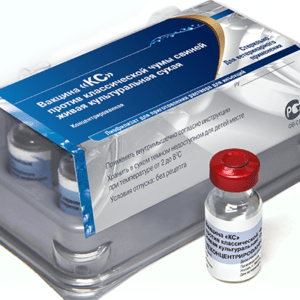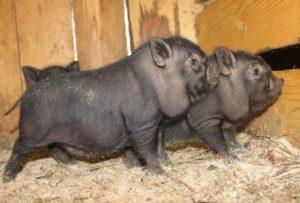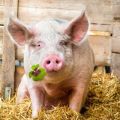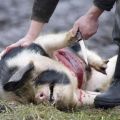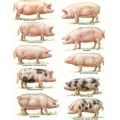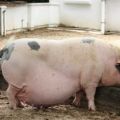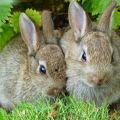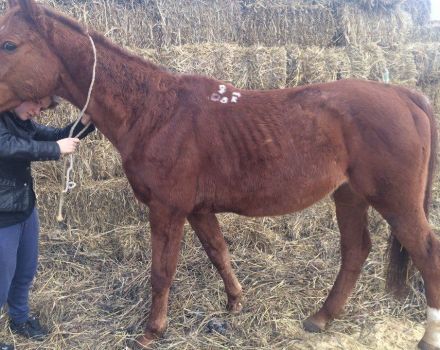What do pigs eat and what to feed them to grow quickly at home
Many believe that pigs eat almost everything, not disdaining even dangerous products of plant and animal origin. They are truly omnivorous, not picky about food and will be happy with whatever is given to them. But if you want to get high-quality meat, which will be in great demand among buyers, you should familiarize yourself with the feeding rules and follow them. Also, monitor the diet of pets, develop it correctly and use only high-quality feed and products.
Features of the diet
Wild pigs are close relatives of livestock and are very dangerous animals. They, in addition to plant products, prefer meat, fish, do not refuse to hunt small animals and even people who carelessly walk through the forest picking mushrooms. Bones are a source of calcium for wildlife. They hunt rats, birds, insects, do not refuse plant foods in the form of berries, flowers, grains, and mushrooms. They love fish and other aquatic inhabitants, so they have adapted to swim skillfully. Pigs break holes well, find plant roots.
Therefore, on farms, it is required to correctly formulate the diet, not forgetting that pigs need a moderate amount of coarse fiber. When developing it, the main thing is to keep in mind the norms for the species and breed of pigs, individual characteristics.
Feeding types
There is a classification of feed types based on the consistency of the feed. It is important to stick to the same type, without changing it during the feeding of the animal.
Dry
Dry food involves the use of combined feed, concentrates exclusively in unsoaked form. Grain-based blends are commonly used.
The advantages of this feeding method:
- does not deteriorate due to lack of moisture and is consumed whole by animals without residue;
- can be stored for a long time;
- relieves pig feces from unpleasant odor;
- helps to grow piglets quickly.
Important! Give the pigs more water and make sure that it is always in the drinker, otherwise difficult digestion will lead to disturbances in the digestive system and constipation.

Liquid
Liquid food is fixated on serving mixes, stews and dairy products. This method saves money, since waste is most often used for cooking. If you apply this technology, the animal will gain weight poorly, grow slowly and maintain weight.
The nutritious mass can be prepared independently, using vitamin and mineral supplements, 10 g per 1 kg of finished feed.
Wet
Most often, pig breeders use the classic type of feeding - wet. It involves the preparation of the so-called mash. For cooking, food waste, milk, concentrates, vegetables, herbs are used. This method is economical and better than liquid, as it is more balanced and nutritious. Pigs get enough protein, fats and carbohydrates, as a result of which they gain weight.
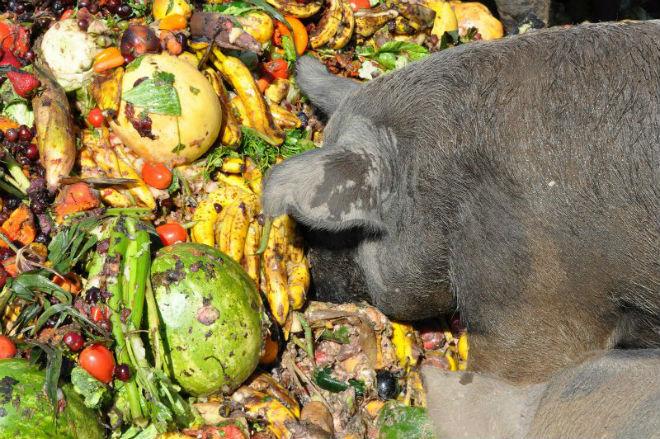
Important! It is worth remembering that such food quickly deteriorates, so regularly clean the feeder from leftovers and wash it out.
Feeding types
The formulation of complete diets must be justified. To begin with, decide what the pig is being raised for, what you ultimately want to get: meat or lard.
For meat
Beef feeding technology is divided into the following types:
- Low intensity. The weight gain is insignificant; before slaughter, a one-year-old animal should be carried from 90 to 100 kg. This type has the advantage that it costs little to feed. It is most often used for growing at home, in the presence of a small farm. In this case, the meat is of low quality.
- Intensive. The weight gain is significant. At the age of 1 year, the weight of the pig exceeds 120 kg, that is, 20% more than the previous type. The feed is more expensive in the case of such a diet, but the original product is of excellent quality if the diet is followed. Thanks to this type, a pig can be raised in 6 months.
- Bacon. To get quality bacon, juicy and soft pork, meat must contain a lot of muscle mass and a thin layer of fat. Piglets for such complementary foods are selected according to special criteria. They should be healthy, have thin skin, an even torso and belly without fat sagging. The pig should have a strong back and plenty of fat and muscle from the occipital crest to the tail. Feeding is divided into several stages, the animal should eat about 750 g per day.
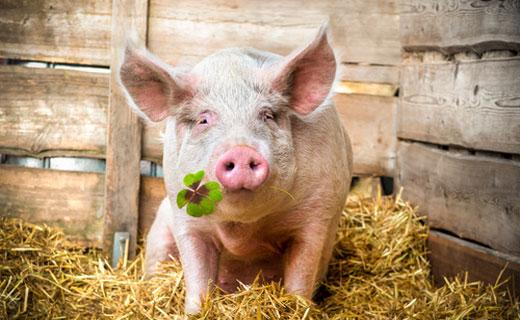
For meat and greasy productivity
When choosing piglets, preference should be given to those who have a well-developed chest and back, since it is in these places that a large amount of fat can accumulate. From one pig you can get from 1 to 5 kg of lard, sometimes a lard with layers is formed. Do not bring the pig to a weight of more than 105 kg, since with an increase in this indicator, it will begin to grow fat, and the fat can become loose, lose its shape and deteriorate.
For greasy productivity, feeding on compound feed and food waste is considered effective. This food is considered natural, which has a positive effect on the quality of the fat.
To get the highest quality products, you need to use special tables, which indicate the exact feeding ration. There are also budget table options for medium to low quality meats.
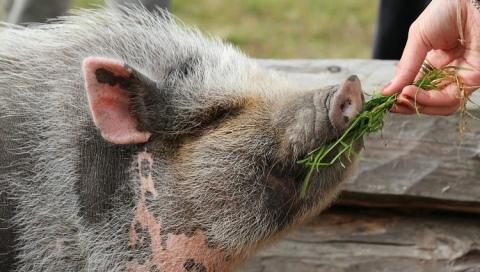
What foods can you feed?
When formulating a diet, it is important to consider the amount of food, their composition and the method of preparation so that the pigs grow quickly. Among the mandatory sources of calories in the menu, the following food groups should be present:
- Vegetables. Carrots, beets, pumpkin are the favorite food of pigs. It is recommended to serve them grated. And it is better to pre-cook potatoes and combine with grain for greater nutritional value.
- Roughage. The pig eats hay with pleasure, since this product improves the functioning of the digestive system and is well absorbed by the body. Soak the food in boiling water before use.
- Cereals. The best product for fattening due to its high nutritional value, therefore, its consumption should be higher than other types of food. Rinse, grind and boil before serving.
- Pigs love greens, but first it is required to grind the grass, excluding dry stems, which can harm the digestive tract of the animal.
- Kombisilos. It includes beets, carrots, cabbage, legumes, and may vary.Pigs are happy to eat such a complex. A great option for quick groundbait. The main thing is not to overdo it and not bring the animal to fatty condition.
To get quality meat and lard, you need to feed your pig with quality and natural products.
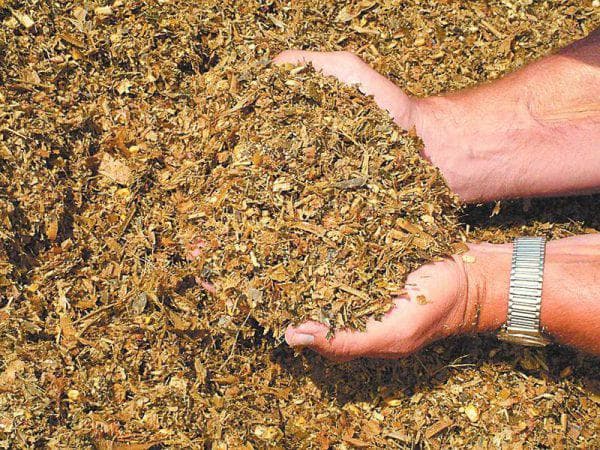
What is forbidden to give to pigs?
Despite the fact that pigs are omnivores, junk food can negatively affect their health and the quality of meat in the end. It is worth studying several groups of foods that are prohibited for use by animals:
- Plants containing alkaloids and other harmful substances, which can provoke severe poisoning and even death. These include horse dill, black nightshade, caustic buttercup, spurge, dog parsley.
- Avoid using green or overgrown potatoes. Such tubers have high concentrations of toxic substances. It is also forbidden to serve water in which potatoes were cooked.
- Pickles. An overdose of salt in the body leads to the death of the animal.
It is strongly not recommended to feed the animal with food that has traces of mold and other fungi, as well as parasites.
Useful tips for fattening
When feeding pigs, follow the advice of experienced farmers:
- To get high-quality lard in large quantities, it is important to make sure that the pig moves less. It is not recommended to completely restrict movement, but to reduce the activity of the animal.
- Use natural and high-quality feed for complementary foods. Do not use growth stimulants and hormones - they will negatively affect the quality of the meat.
- Give more often mineral-protein complexes, which contain many vitamins and minerals.
- Pigs can digest any food. It is advisable to combine plant and animal products to balance the menu.
When starting to feed, you should follow the advice of experienced pig breeders to get a quality product.
